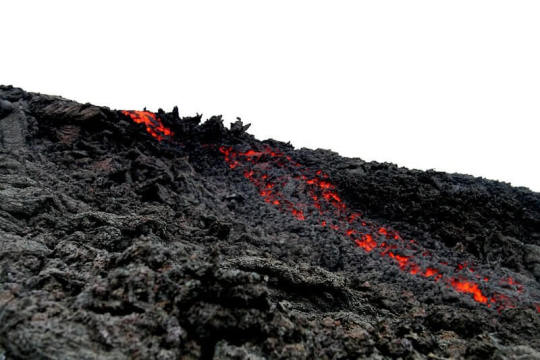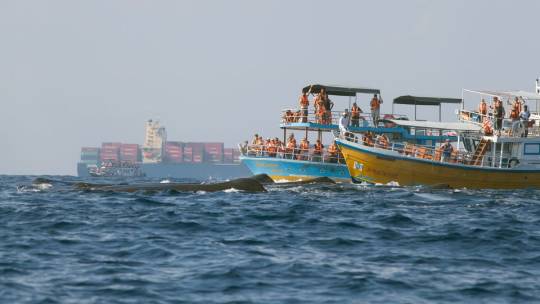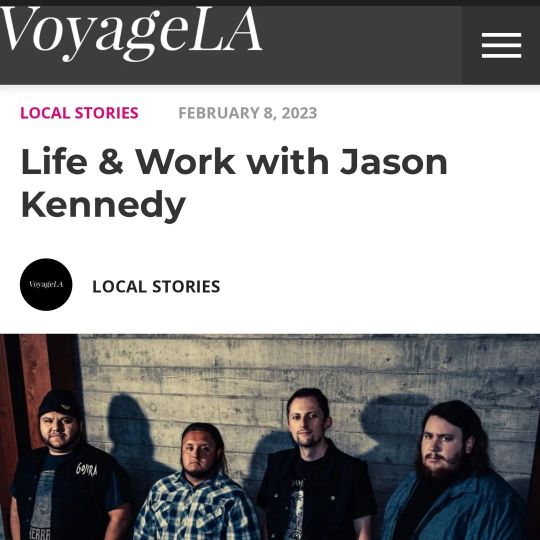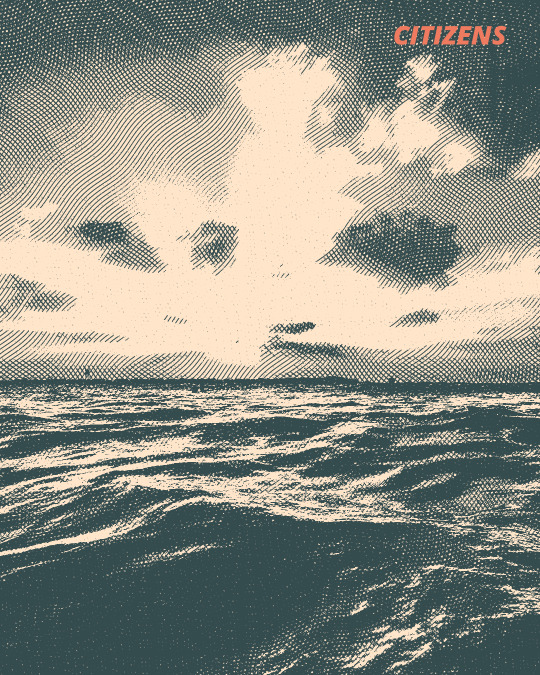#Tectonicplates
Explore tagged Tumblr posts
Text

The volcanic Almannagjá Gorge in Thingvellir National Park, Iceland, is on the Mid-Atlantic Ridge where the Eurasian and North American tectonic plates pull apart.
6 notes
·
View notes
Text

page 553 - I breathe again and the mountains have changed.
Imperceptibly but definitely.
Time loses meaning in the darkness down here. But still my brain spins and my heart races and it's good to breathe deeply, to slow down and to attempt a better grasp on things.
The air is murky, but there is no food and water only in drips, so a deep breath is the only thing available to fill me up.
#economy#economist#economics#exploitation#discrimination and preferential hiring preferences#discrimination#marginal factor cost#marginal#mountain#mountains#mountain range#rockies#alps#pyrenees#geology#geography#tectonic#plate tectonics#tectonicplates#erosion#mountain life#meadow#photograph#graph#chart
62 notes
·
View notes
Text
#Indonesia#Volcano#Eruption#RingOfFire#SeismicActivity#TectonicPlates#Geology#NaturalDisaster#DisasterManagement#Safety#VolcanicEruption#IndonesiaVolcano#Science#Environment#DisasterPreparedness#VolcanoSafety#EmergencyResponse#GeologicalActivity#IndonesianGeology#EarthScience
0 notes
Text
Exploring the Mysteries of Magma and Volcanic Eruptions

Introduction
At the heart of the Earth's mantle lies a molten force that has shaped our planet for billions of years - magma. This enigmatic substance, hidden from our view deep within the Earth's mantle, holds a profound significance in understanding geological processes and natural phenomena. From its role in volcanic eruptions to its influence on Earth's tectonic movements, the importance of magma cannot be overstated. We will embark on a journey into the depths of our planet’s inner workings and uncover how magma serves as both a destructive and creative force, shaping landscapes and ecosystems in ways that are both awe-inspiring and humbling. Through understanding the properties of magma and its behavior beneath the Earth’s surface, we gain insight into predicting volcanic activity, harnessing geothermal energy, and comprehending planetary formation. In this article, we delve into the captivating world of magma, shedding light on its crucial impact on our planet and why it continues to captivate scientists and researchers around the globe.

Volcanic eruption in Holuhraun, Iceland. Photo by Sparkle Motion. Flickr.
Composition of Magma
Magma is a molten mixture of rock, minerals, and gases found beneath the Earth's surface. When magma flows onto Earth's surface, it is called lava. This hot, semi-fluid material can reach temperatures above 1300°C and contains a variety of chemical compositions, depending on the source rock. Magma and lava contain three components: melt, solids, and volatiles. The melt is made of ions from minerals that have liquefied. An ion is a particle like an atom that has lost or gained an electron. The solids consist of crystallized minerals that float in the liquid melt. Volatiles are gaseous components—such as water vapor, carbon dioxide, sulphur, and chlorine—dissolved in the magma. The presence and amount of these three components will affect the physical behaviour of magma. Magma is primarily composed of silicate minerals, along with varying amounts of dissolved gases and other elements. These silicate minerals include compounds such as silica, alumina, iron oxide, magnesium oxide, and calcium oxide, which together determine the physical properties and behavior of different types of magma.

Suspended between the Eurasian and American tectonic plates. Photo by Jason Eppink. Flicker.
The Origins of Magma
Mantle and Crust: Magma's Birthplace Magma originates in two places: the lower part of Earth’s crust and the upper portion of the mantle. The mantle has two main parts, the upper mantle and the lower mantle. The upper mantle attaches to the layer above, known as the crust, our planet's thin outer layer. Together, they form the lithosphere—a fixed shell divided into tectonic plates. The Solid Mantle What most people don’t know is that the mantle consists of solid rock despite its very high temperatures (200C – 4000C ). Although it is solid, the mantle moves. This comes about by mantle convection, which is the very slow creeping motion of Earth's solid silicate mantle as convection currents carry heat from the interior to the planet's surface. It is mantle convection that is the fundamental driver of tectonic plate movement. Pressure and Temperature: A Delicate Balance The explanation for this paradox is that the melting temperature of any solid is dependent on both temperature and pressure. The very high pressures inside the mantle raise the melting point of the rock. In the upper mantle, the pressure is 237,000 times more than our atmospheric pressure and in the lower mantle, it is more than three million times greater. Consequently, despite reaching very high temperatures, the rock in the mantle does not melt because the intense pressure prevents bond breakdown between particles.

Alaska’s Pavlof Volcano. NASA’s View from Space. Photo by NASA. Flickr.
Generating Magma
Special Conditions for Magma Formation Magmas do not form everywhere beneath the earth's surface, so special circumstances are necessary. Magma forms through three mechanisms: raising the temperature of mantle rock above the melting point, lowering the melting point by reducing pressure (a physical mechanism), or adding a flux (a chemical mechanism). These special events occur at mid-oceanic ridges (divergent plate boundaries), hotspots, and subduction zones (convergent plate boundaries) and we shall now consider these individually. Geological Settings for Magma Formation Divergent Plate Boundaries Divergent boundaries, also known as spreading centers, are fascinating geological features where two tectonic plates move away from each other. These boundaries occur primarily along mid-ocean ridges, where new crust is constantly being created as magma rises to the surface and solidifies. The process of seafloor spreading at divergent boundaries results in the formation of geologically young oceanic crust. Hotspots With this second mechanism, heat from very deep in the planet creates hotspots which are intensely hot areas that cause the mantle in that area to melt. Magma from partial melting of mantle rocks rises upward through the mantle and may pool at the base of the crust or rise through the crust. These hotspots typically occur far from tectonic plate boundaries, challenging the conventional understanding of volcanic activity. Transforming solid mantle into liquid magma by simply applying heat, is the least common process for generating magma. Subduction Zones Subduction zones are dynamic geological environments where one tectonic plate is forcefully pushed beneath another, leading to a host of seismic and volcanic activities. At these convergent plate boundaries, an oceanic tectonic plate subducts beneath a continental plate and this can trigger the formation of deep ocean trenches and explosive volcanoes.

Mount Saint Helens active lava stacks. Photo by Art Tower. Pixabay.
Magma Types and Volcanic Eruptions
Understanding Magma Types There are three main types of magma: basaltic, andesitic, and rhyolitic. Basaltic magma is the most common type and is associated with shield volcanoes and ocean-floor eruptions. It has low viscosity, meaning it flows easily and can travel long distances before solidifying. This type of magma also tends to erupt at higher temperatures, around 1000-1200°C, resulting in relatively gentle eruptions. Andesitic magma contains a balance of silica and iron, giving it moderate viscosity. This type of magma often leads to explosive eruptions due to its tendency to trap gas bubbles as it rises through the Earth's crust. If precautions are not taken, nearby communities can face danger from these eruptions. Finally, rhyolitic magma has the highest silica content, resulting in very high viscosity. Eruptions involving rhyolitic magma can be extremely violent due to the build-up of gas pressure within the viscous lava. The explosive nature of these eruptions often leads to the formation of steep-sided stratovolcanoes such as Mount St Helens in Washington state, USA. Understanding these variations in magma composition provides valuable insights into volcanic activity and helps geologists predict eruptions with greater accuracy. The Impact of Magma on Volcanic Eruptions When magma rises towards the surface, it can become trapped in underground chambers, building up pressure until it finally erupts. The characteristics of magma, including its viscosity and gas content, have a direct impact on the type of eruption that occurs. Understanding these dynamics helps scientists predict volcanic activity and mitigate potential disasters. Recent research has also shown that monitoring changes in magma composition before an eruption may offer valuable insights into its behavior. By studying these patterns, scientists aim to develop better early warning systems for impending volcanic eruptions. This prospect is particularly promising in regions, like Iceland, where volcanic activity poses a significant threat to local communities and infrastructure.
Conclusion
Through advancements in technology and research, scientists have made great strides in unraveling the mysteries of magma's behavior and composition. They have shown that magma forms deep beneath the Earth's surface through the process of partial melting of the mantle. When temperatures in the mantle rise, they can cause rocks to partially melt, forming liquid magma. This often occurs at tectonic plate boundaries, where subduction or spreading causes intense heat and pressure, leading to the formation of magma chambers. Additionally, hot spots, such as those found at Yellowstone National Park or Hawaii, can also produce magma as rising plumes of mantle material reach shallower depths. As we have seen, the composition of magma is a complex interplay of various elements, including silica, oxygen, and diverse minerals. Research has shown that there are three main types of magma - basaltic, andesitic, and rhyolitic - each with distinct compositions and characteristics that influence volcanic eruptions. The process of convection within the mantle also plays a crucial role in generating the heat necessary for magma formation. Understanding how and where magma forms offers valuable insights into Earth's geological processes and has significant implications for volcanic activity prediction and hazard mitigation efforts. Finally, we now understand that magma ascends to the surface at mid-oceanic ridges and cools to form oceanic crust. Millions of years later, tectonic processes return this crust to the mantle at subduction zones. The formation of oceanic crust constantly occurs as magma flowing from our planet’s interior returns to the mantle, thus resurfacing about two-thirds of the Earth every 100 million years. Sources: THX News, European Geosciences Union, Nature Geoscience, PubMed & Web of Science. Read the full article
0 notes
Text
#earthquakeblogs#earthquakephilippines#earthquakePH#philippinetectonicplates#tectonicplates#thebigone#westvalleyfault#pacificringoffire#earthquakebelt
0 notes
Text
youtube
This was a short animation I made for a project in my AICE Marine class this year. Features the voices of myself and my good friend Landon
#science#convergent boundaries#tectonicplates#youtube#youtube video#youtube videos#art#animation#short#funny#voice acting
0 notes
Photo

The split of the African plate could gift six landlocked countries a coastline Africa is gradually splitting into two. The Somali and the Nubian tectonic plates are slowly disintegrating from each other, while the Arabian plate continues to pull away.Read more... https://qz.com/these-six-countries-will-have-a-coastline-if-africa-spl-1850218248
#africanplate#greatriftvalley#somaliplate#geographyofafrica#eastafricanrift#geology#continents#geologyofafrica#geologyofethiopia#tectonicplates#eastafrica#africa#Faustine Ngila#Quartz
0 notes
Link
Writer of creative non fiction who travels and lives her best life
0 notes
Photo

Thank you @voyagelamag for featuring us in your local stories ! You can checkout the full article here 👉 http://voyagela.com/interview/life-work-with-jason-kennedy-of-ontario-california/ #slanderus #slanderized #voyagela #voyagelamag #lifeandwork #jasonjkennedy #losangeles #localbands #localstories #progressivemetal #heavymetal #forevermetal #absorbinginfinity #tectonicplates #cobrakai #findyourlifeline #omen #espiritu #asmallsacrifice #absolution #newalbum #distrokid #supportlocalmusic #metalband #metalmusic #toinfinityandbeyond #supportlocalbands (at Los Angeles, California) https://www.instagram.com/p/Coa5tXgJBCQ/?igshid=NGJjMDIxMWI=
#slanderus#slanderized#voyagela#voyagelamag#lifeandwork#jasonjkennedy#losangeles#localbands#localstories#progressivemetal#heavymetal#forevermetal#absorbinginfinity#tectonicplates#cobrakai#findyourlifeline#omen#espiritu#asmallsacrifice#absolution#newalbum#distrokid#supportlocalmusic#metalband#metalmusic#toinfinityandbeyond#supportlocalbands
0 notes
Link
Explore the fascinating world of volcanism in this informative video. Learn about the different types of volcanoes, the processes that drive volcanic eruptions, and the impact these natural phenomena have on our planet. We’ll take you through the stages of an eruption, explain how magma forms deep within the Earth, and discuss the role of tectonic plates in shaping volcanic activity. Discover the science behind some of the most famous eruptions in history and how scientists monitor and predict future volcanic events. Perfect for students, educators, and anyone interested in the dynamic forces that shape our world!
2 notes
·
View notes
Photo

Nu de vulkaan op het Reykjanes schiereiland terug uitgebarsten is, misschien tijd voor een klein lesje aardrijkskunde. Het eerste maak ik meteen duidelijk met deze foto, gemaakt te Þingvellir. De reden dat er in Ijsland zoveel vulkanische activiteit is, komt doordat Ijsland op de scheiding van de Euraziatische en Noord-Amerikaanse plaat ligt. Wat je hier op foto ziet is deze scheiding, zo letterlijk kunnen we dit dus zien. Een tweede les is dat er meerdere types vulkaanuitbarstingen zijn. De uitbarsting zoals deze vandaag voorvalt, is geen bedreiging voor vliegverkeer en zo: er wordt wel wat lava uit de grond gespoten, maar deze baant zich onmiddellijk een weg naar lager gelegen gebieden. Men hoopt in Ijsland aan de hand van recent gemaakte dammen plaatsen zoals Grindavik en Blue lagoon te kunnen beschermen. Doe de Ijslanders dus een plezier en blijf er naartoe reizen. Heb echter wel respect voor alle verboden aldaar, ze zijn er voor je eigen veiligheid. Als ik kon, reisde ik zelfs meteen terug om de uitbarsting te platen 😊 @iceland @visit.iceland_ @icelandair @thingvellir_national_park #thingvellir #þingvellir #goldencircle #iceland #ijsland #islande #berg #vulkaan #volcan #volcano #natuur #nature #zee #mer #sea #oceaan #ocean #tectonicplates #tectonic #aardbeving #earthquakes
0 notes
Photo

Learn about plate tectonics, the theory that explains the movement of Earth's tectonic plates and the geological phenomena it causes. This comprehensive guide covers its origin, types of plate boundaries, and the forces driving plate movement. read the full article: https://bit.ly/4cYEC7y #PlateTectonics #TectonicPlates #EarthScience #Geology #EnvironmentalScience read more: what is plate tectonics
0 notes
Text
- Earthquake: Sudden crust shaking. 🌍
- Causes: Plate movement, volcanoes, faults, nuclear blasts. ⚡️
- Tectonic Plates: Earth's broken surface. 🌋
- Major Plates: 7 large, 7 smaller. 🌐
- Fault Zones: Weak points, earthquake areas. ⚙️
- Epicenter: Directly above quake's focus. 🎇
- Seismic Waves: Shaking inside Earth. 🌊
- Seismograph: Detects seismic waves. 📉
- Richter Scale: Measures quake magnitude. 📏
- Effects: Building damage, fires, landslides. 💥
- Safety: Indoors, outdoors precautions. 🚨
check out the link for the complete notes


- #EarthquakeAwareness 🌍
- #PlateMovement ⚡️
- #TectonicPlates 🌋
- #FaultLines ⚙️
- #SeismicActivity 🎇
- #SafetyPrecautions 🚨
- #DisasterManagement 💥
- #Seismology 📉
- #NaturalDisasters 🌊
- #BuildingSafety 🏢
#education#school#notes#youtube#studyblr#students#homeschool#latitudes#studying#study#college studyblr#new studyblr#study aesthetic#student life#study blog#study inspiration#study hard#study motivation#study notes#study tips#study with me#studyblr community#studygram#study inspo#studyspiration#studyinspo#studystudystudy#studyspo#university student#studywithme
0 notes
Text

3/19/24 — Open 6-9p Mask recommended. No open drinks, please.
Plenty of #Eclipse conspiracy theories around. Mine is... What if #PolarIce was "glue" holding Earth's #TectonicPlates together? Now, the climate-weakend "glue" allows #GraviticForce of #Lunar / #Solar alignment to pull the planet apart!
Or... #Vampires will emerge during #Totality, taking advantage of our assembled masses – craned necks exposed as we focus all attention skyward.
#BonnettsBooks#DaytonOhio#WritingPrompt#usedbookstore#brickandmortar#daytonoh#dayton#vintagepaperbacks
0 notes
Text

Indian scientists have unraveled the mystery behind the giant "gravity hole" in the Indian Ocean. Known as the Indian Ocean geoid low (IOGL), it is Earth's most significant gravitational anomaly, resulting in a sea level 106 meters lower than the global average. By reconstructing plate tectonic movements and running computer simulations, scientists from the Indian Institute of Science (IISc) traced the origin of this unique feature. Sinking tectonic plates beneath Africa generated plumes under the Indian Ocean, shaping the IOGL. This discovery provides insights into Earth's geology and gravitational forces. #IndianScientists #GravityHole #IOGL #TectonicPlates #GeologicalDiscovery Read more at: https://ctznsnews.blogspot.com/2023/07/indian-scientists-uncover-origins-of.html #capitanstudios #zinkmagmore #peterrounaldgomes
0 notes